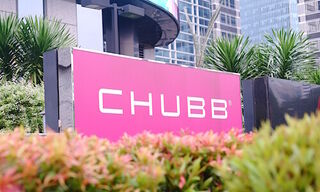Why Julius Baer is Growing Where Others Falter
Julius Baer recorded higher profit and more client money last year. finews.asia summarizes the seven things that the Swiss private is doing right, and where it must improve.
1. Triumvirate of Growth
Under CEO Boris Collardi, the Zurich-based private bank grew its assets in three different ways: net net money added 11.9 billion Swiss francs, the acquisition of Kairos and Commerzbank's Luxembourg arms piled on another 11.2 billion francs, and favorable market performance tacked on 12.7 billion. Julius Baer is using all three as growth prongs – aggressively and successfully.
2. Gains Where Others Falter
While rivals like UBS have shown signs of cooling in Asia's hot private banking market, Julius Baer is still pulling in money – the the tail-end of the year in particular showed a pickup in client activity.
The same goes for western Europe, where most Swiss private banks are languishing due to widespread tax «regularization» programs, or efforts to bring offshore money back home. Not so at Baer: the bank managed to translate a blip of consolidation in Monaco to hoover up disillusioned clients and their money.
3. Hiring Mode
Wealthy clients don't find a private bank on their own: Julius Baer plans to recruit 80 additional advisors annually in coming years. By way of comparison: the private bank hired 50 private bankers in 2015 and 166 last year – 50 from the Kairos and the Commerzbank deals. Most of the advisors have been taken on in Switzerland, Asia and Monaco.
4. Solid Gross Margin
Baer's margin across all its activities sank in the second half to 88 basis points, from 95. This was mainly due to lackluster client activity, which couldn't entirely be offset by higher commission and interest income. To be sure, with an average margin of 91 basis points, Baer doesn't need to shy away from an industry comparison.
5. Balance Sheet Bulge
The bank widened lending in the quarter, which added 12 billion Swiss francs to its balance sheet. In short, the bank used balance sheet to win new clients, a strategy employed by several private banks in an increasingly competitive market.
The bulk of lending – 76 percent – was Lombard loans, with the rest lent as mortgages, mainly in Swiss real estate. Julius Baer emphasized that its balance sheet remains highly liquid and low-risk, and that it's lending is collateralized against assets.
The bank's sporting lending practice left a mark on capital: the key ratio for this fell to 10.6 percent on the year, arguably on the low side for a solid private bank.
6. Prescient Personnel Picks
finews.asia has been critical of Baer's personnel churn in the past, but the bank's strong showing in Asia and western Europe vindicates Collardi's tendency to switch private bankers in and out quickly. Asia's new boss Jimmy Lee managed to maintain momentum in a market which cooled during the period. The longtime Credit Suisse banker channeled his network and pipeline, to Baer's benefit.
The stagnating western European market showed a similar development: new head Yves Robert-Charrue took over the formerly neglected region, and got a quick fillip from turbulence at other banks in Monaco.
7. Management Rejuvenation
Collardi adroitly nabbed one of the few high-profile women in Swiss banking for top management, hiring former GAM and UBS banker Larissa Alghisi. She represents a partial rejuvenation of Baer's top management that Collardi has promised. But he needs to do more to ensure continuity with client-facing private bankers in top management as well.




























